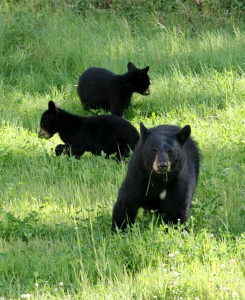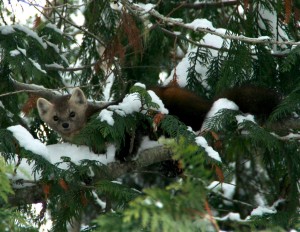Rodents breed rapidly. Packrats only require a gestation of 30 to 38 days. However, the demands of nursing and being pregnant at the same time can put excessive stress on a female’s system. Therefore, some rodent species utilize delayed implantation to reduce the stress on their system while nursing young.

Delayed implantation ensures a female black bear has enough “reserves” to care for her cubs. A nursing female can lose up to 40 percent of her body weight over winter compared to 15 to 25 percent for a non-nursing female. If a female’s body doesn’t have the reserves her body will abort the fetuses before implantation.
Unlike black bears that utilize obligate delay (I wrote about in last week’s column), rodents and shrews exhibit facultative delay. With facultative delay, embryos don’t implant until the young have stopped nursing.
Female packrats nursing a litter can delay implantation of newly fertilized eggs for three to 14 days. Facultative delay allows the female to postpone the most demanding phase of gestation until she no longer needs to produce milk for her current litter.
Likewise, female kangaroos that mate with a joey in the pouch can delay implantation for up to 235 days.
For kangaroos and packrats, delayed implantation reduces the stress on the female’s body during pregnancy and nursing. For black bears, delayed implantation ensures the female has adequate reserves to produce a litter at the most ideal time of year.
The reason for delayed implantation in other animals is less clear.
Why do fishers mate within ten days of giving birth only to delay implantation for nine to ten months? Gestation after implantation is only 30 days.
Similarly, both long-tailed weasels and ermine exhibit delayed implantation. Both breed in the summer and delay implantation for eight to 10 months. After implantation, gestation lasts about one month before the female gives birth in April or May.
Scientists can’t explain why long-tailed weasels and ermine utilize delayed implantation while their relative the least weasel does not. All three of the animals are short-lived (a few years) and prey on rodents, so what is the advantage?
Delayed implantation is advantageous for some animals because it allows the males to mate in summer or fall when they are in prime condition. The delay then allows females to time birth so the young are born at the best time of year– typically spring because it allows the longest time for young to develop skills before winter conditions arrive and food is typically more plentiful in the summer.
Another advantage of delayed implantation is it provides males the opportunity to mate with females who are all receptive to breed at the same time versus being receptive throughout the year.
Scientists still find aspects of delayed implantation a mystery, especially why some animals exhibit the reproductive strategy while related species do not. No matter the reason, the strategy works for animals ranging from weasels to badgers to river otters and bats.





WOW! I want to be a vet in a couple years this was really helpful